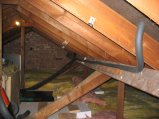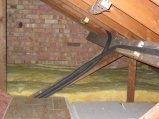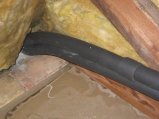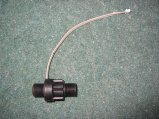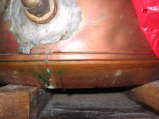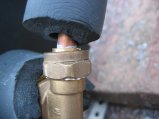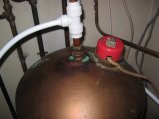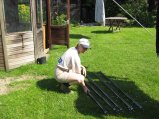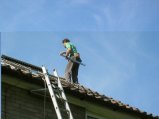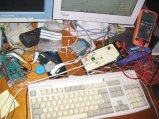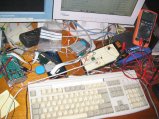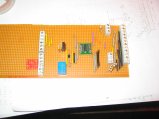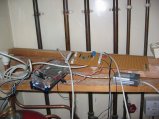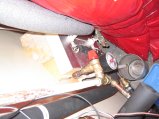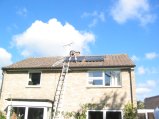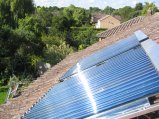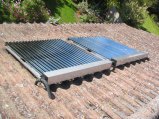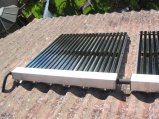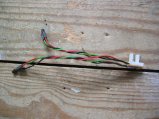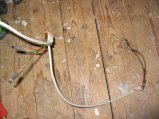Solar Thermal installation
The pipes passing out of the loft down into the airing cupboard. You can see the only join I had to make so far (because 10m 10mm of pipe wasn't enough - doh!). Later on I glued the armaflex together but forgot to do upthe compressionjoint properly so lot of water came out the end of the insulation. I was impressed by how well the glue worked through (normal armaflex glue sticks HT insulation just fine).
This is the business part of the plumbing. From bottom right (which comes out of the PHE), we have drain cock, pump, flowmeter, filling point, check valve with bypass, then T off to pressure guage and EV. Solar return is out the top. The pump is the Davies-craig 'EBP' which provides flow rates from 2-24l/m (2-24W), so should be lower consumption than a conventional CH pump.
Completed solar loop plumbing in situ. The green thing is the garden sprayer pressuriser/filler. The round tin is the catch tank for if the PRV releases any overpressure (the design it such that it never should). The EV piping goes down a bit first then back up, again to stop thermosiphoning of very hot liquid into the EV which might damage the diaphragm.
The expansion vessel. It was going to be in the cupboard opposite this one, to give more room for the tank, but I've temporarily plumbed it in here for now as it was easier. If/when a huge tank goes in here it will be moved. This vessel is 18l which should allow sufficient expansion that the system never vents, even in full stagnation.
Somewhere in all this (probably unscrewing the drainock in order to add the PHE at the top of this photo, as I needed a big spanner and lots of force to get it out) my tank sprang a leak. It's actually coming from a pinprick just to the right of the boss, not (as it looks) from the bottom of the silvery bit.
I spent ages trying to get the solar loop to hold pressure. Adding inserts to the 10mm pipe helped a lot and some La-co PTFE thread seal goop. Unfortunately that allowed me to overtighten this fitting and burst it. Had to go shopping for a new one. (whcih is 5 times as expensive from Ridgeons as from BES - although the new one didn't break)
This mess is my controller. Balloonboard with CUED IO board inthe perspex box, and my IO board plugged into thte I2C bus. The grey box is a USB to ethernet adaptor to connect it to the net. Some proper mounting is needed here, and a display.
It takes more than 6 months to tidy this up properly - it's surprisingly reliable even in this state.
It takes more than 6 months to tidy this up properly - it's surprisingly reliable even in this state.
